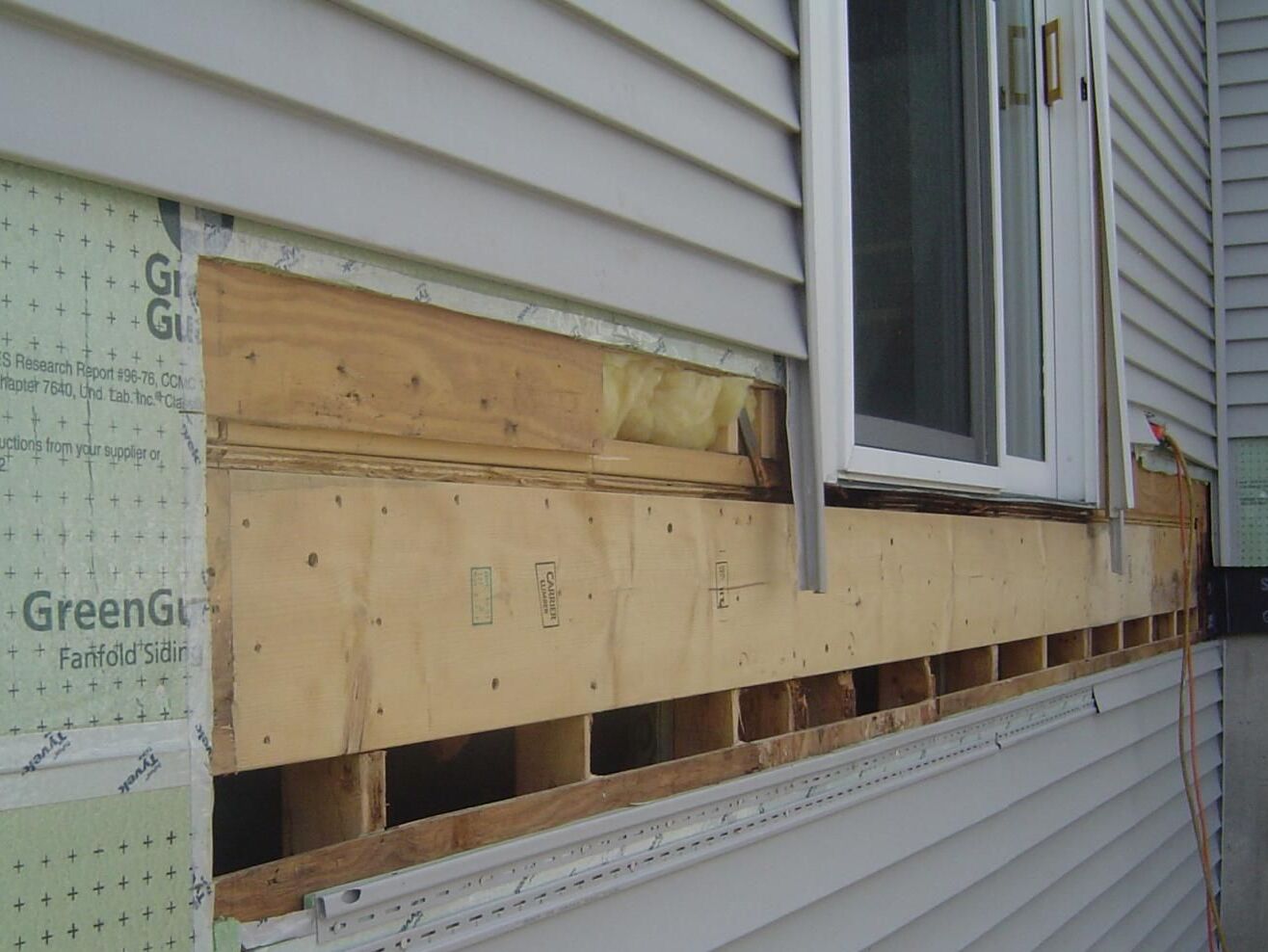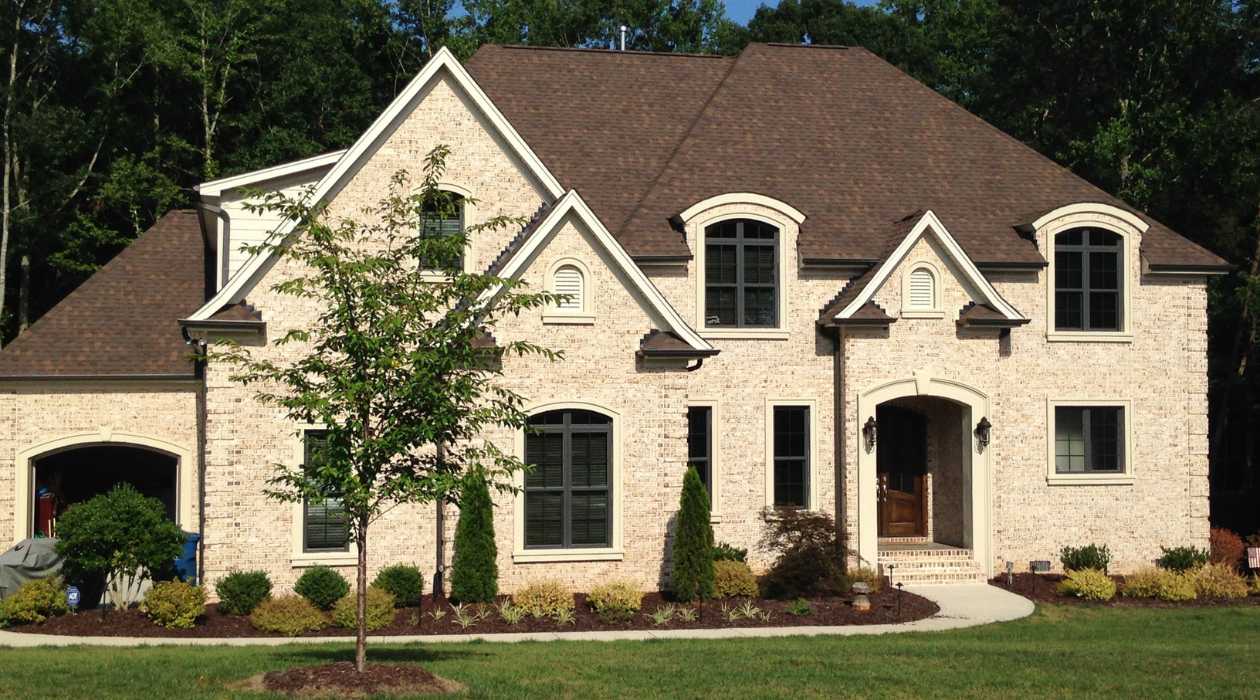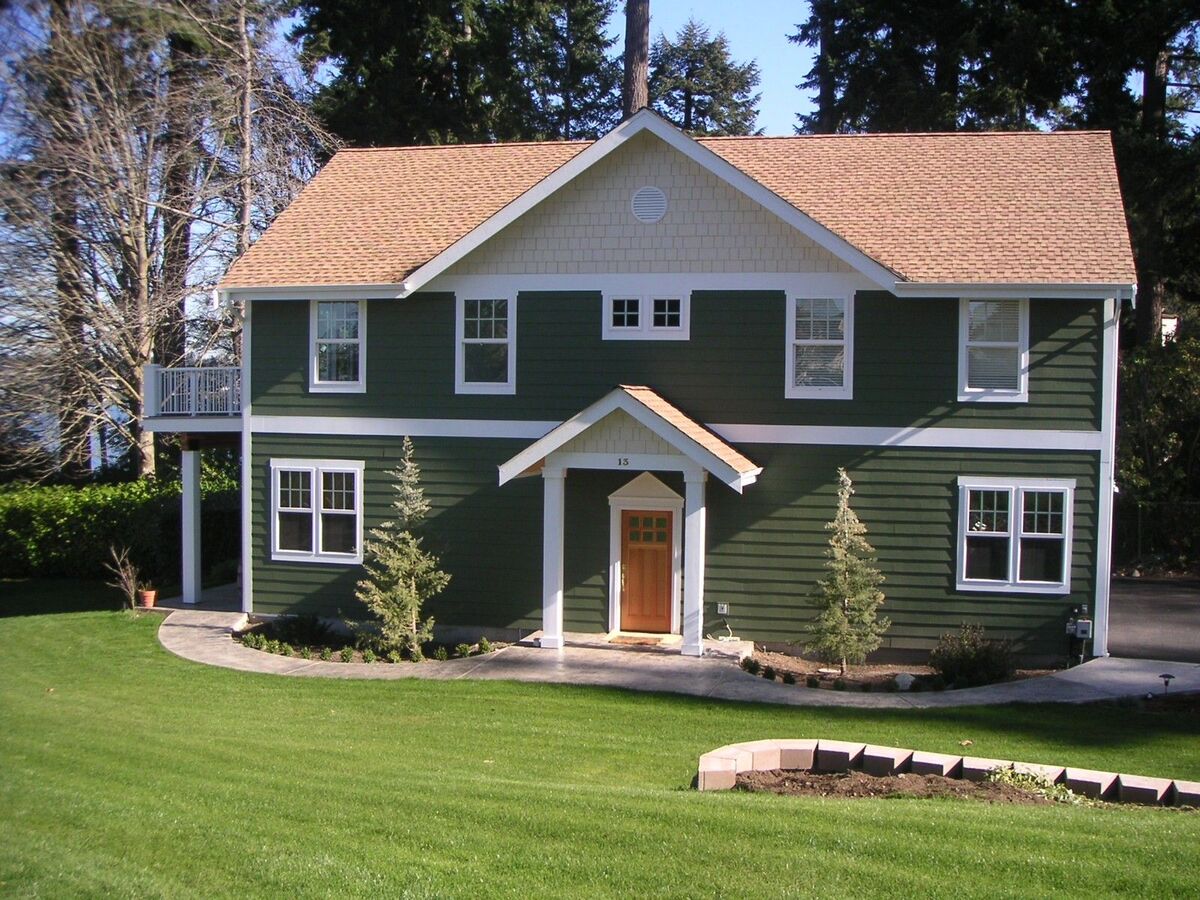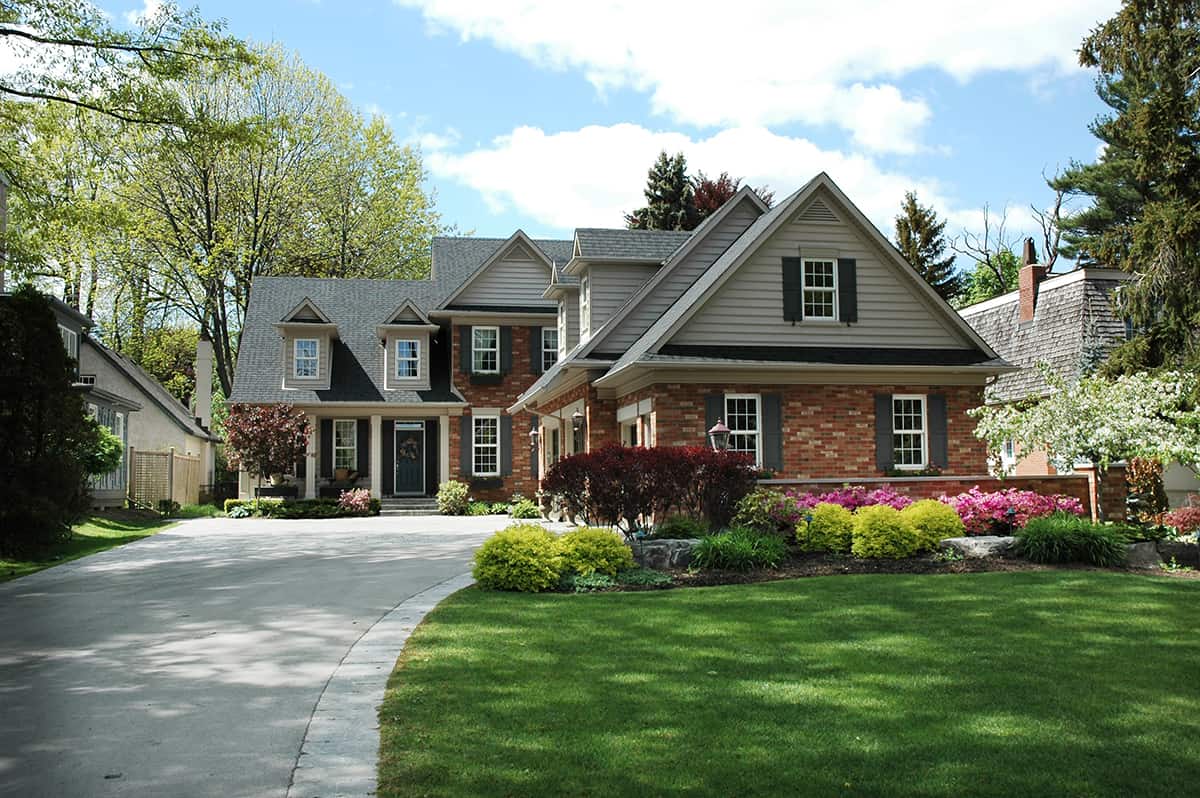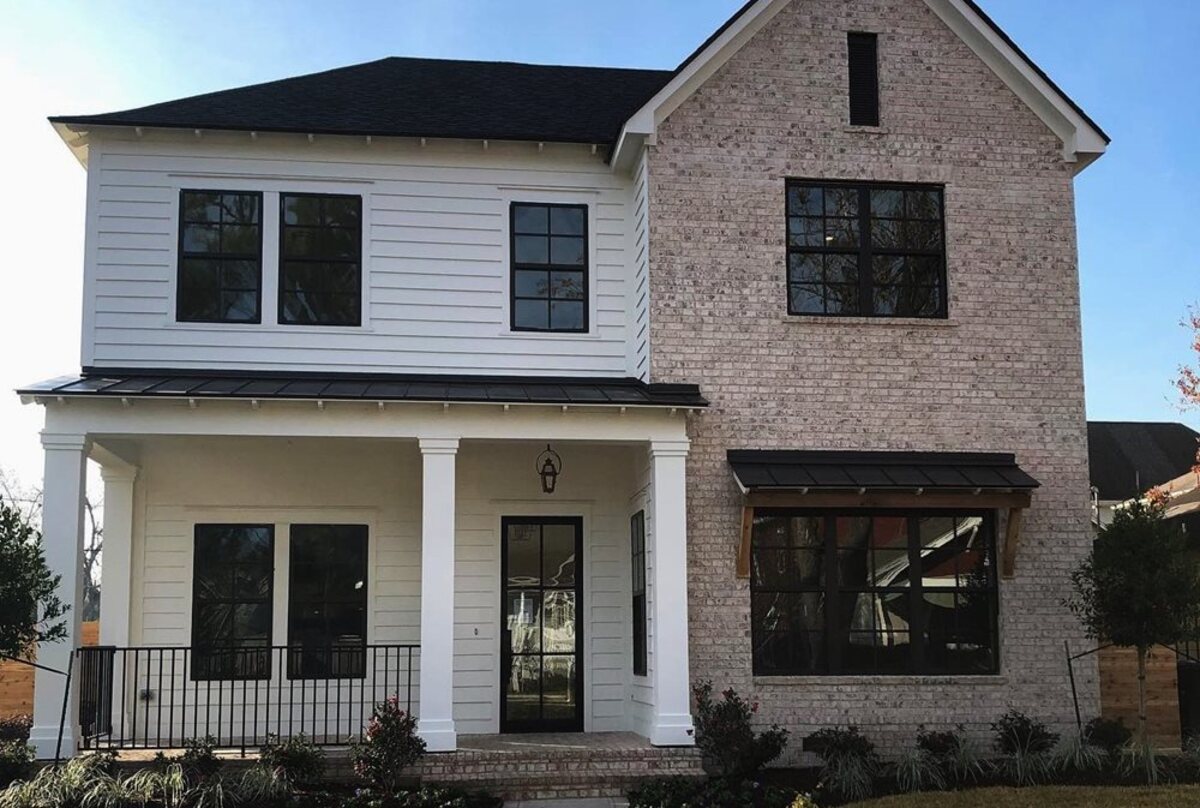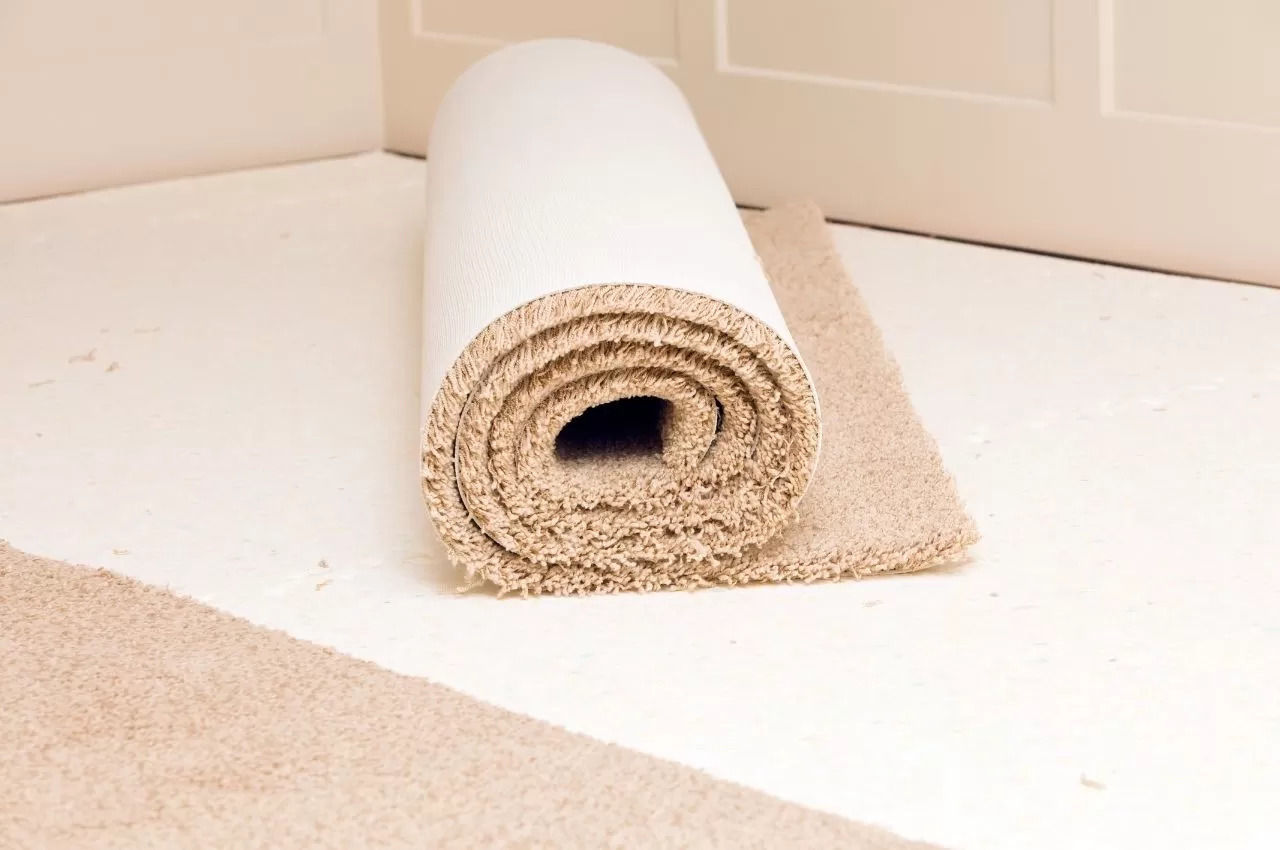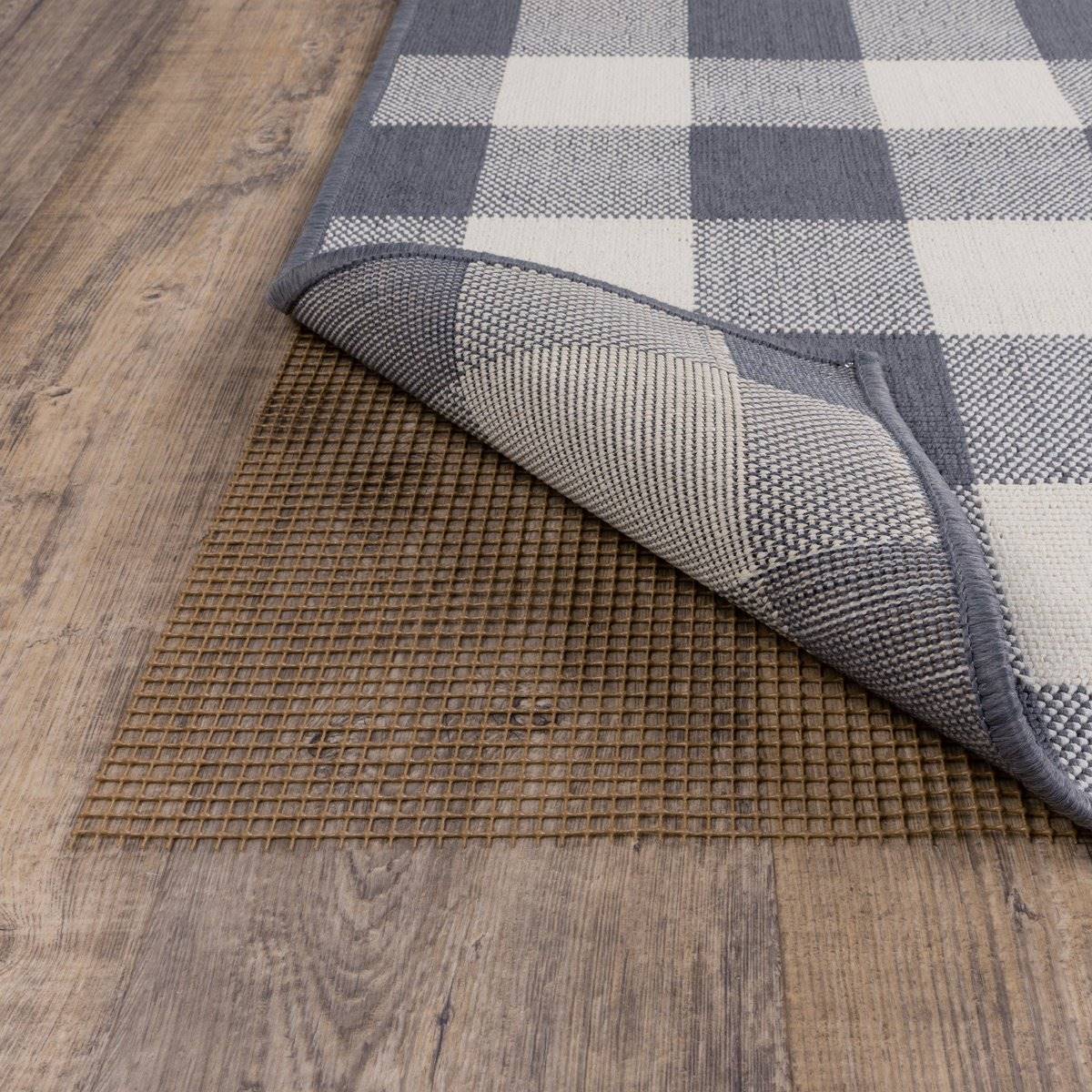

Articles
What Side Of Carpet Padding Goes Down
Modified: January 9, 2024
Looking for articles on what side of carpet padding goes down? Find the answer and expert advice for your carpet installation needs in our informative guide.
(Many of the links in this article redirect to a specific reviewed product. Your purchase of these products through affiliate links helps to generate commission for Storables.com, at no extra cost. Learn more)
Introduction
When it comes to choosing and installing carpet, many homeowners often overlook the importance of carpet padding. While it may seem like an unnecessary expense, carpet padding plays a crucial role in the overall comfort, durability, and longevity of your carpet. But before we delve into the specifics of carpet padding installation, let’s first understand what carpet padding actually is.
Carpet padding, also known as cushion or underlay, is a layer of material that is placed beneath the carpet to provide support, insulation, and additional cushioning. It acts as a buffer between the carpet and the subfloor, absorbing impact and reducing noise. It is typically made of foam, fiber, or rubber and comes in various thicknesses and densities.
The importance of carpet padding cannot be understated. Not only does it enhance the comfort and softness of your carpet, but it also improves its insulation properties, making your space more energy-efficient. Additionally, carpet padding acts as a barrier against moisture, helping to prevent mold and mildew growth. Furthermore, it can extend the lifespan of your carpet by reducing wear and tear caused by foot traffic and furniture.
Understanding the construction of carpet padding is beneficial in making an informed decision about which type of padding is most suitable for your needs. There are two main components of carpet padding: the backing material and the cushioning material.
The backing material serves as a support system and stability layer, preventing the carpet from shifting or stretching. It is typically made of materials like rubber or woven fabric. The cushioning material, on the other hand, is responsible for providing comfort and insulation. It may be made of foam, fiber, or a combination of both.
There are several common types of carpet padding available on the market, each with its own unique characteristics and qualities. Some of the most popular types include foam padding, rubber padding, fiber padding, and combination padding. Foam padding is often made from polyurethane and is known for its softness and durability. Rubber padding provides excellent shock absorption and is ideal for high-traffic areas. Fiber padding, made from materials like felt or wool, is known for its eco-friendliness and insulation properties. Combination padding combines the benefits of foam and fiber to offer a versatile option.
Understanding the advantages and disadvantages of different types of carpet padding is essential in choosing the right one for your specific needs. Foam padding, for example, provides excellent comfort and insulation but may not be suitable for areas with high moisture levels. Rubber padding is highly durable but can be more expensive than other options. Fiber padding is eco-friendly but may compress over time.
Now that we have a basic understanding of carpet padding and its various types, let’s explore the installation process. This includes determining the correct orientation of the carpet padding and considering certain factors to ensure a successful installation.
Key Takeaways:
- Proper orientation of carpet padding is crucial for stability and comfort. The rough side should face down for grip, while the smooth side provides a soft surface for the carpet.
- Consider factors like carpet type, foot traffic, and moisture levels when choosing padding. Follow manufacturer guidelines for optimal performance and longevity.
Read more: Which Side Of The Mattress Pad Goes Up
What is Carpet Padding?
Carpet padding, also known as cushion or underlay, is a layer of material that is placed beneath the carpet to provide support, insulation, and additional cushioning. It is an essential component of a carpet installation and can greatly affect the overall performance and lifespan of your carpet.
The primary function of carpet padding is to provide a comfortable and supportive base for the carpet. It helps to absorb impact and reduce foot fatigue, making walking and standing on the carpet more comfortable. Additionally, carpet padding creates a more luxurious and plush feel underfoot, enhancing the overall tactile experience of the carpeted area.
Another significant purpose of carpet padding is insulation. By adding a layer of padding between the carpet and the subfloor, it helps to reduce heat loss and improve energy efficiency. It acts as a thermal barrier, preventing cold air from seeping through the floor and keeping the room warmer during colder months. This can lead to energy savings and a more comfortable living environment.
Carpet padding also acts as a sound absorber, reducing noise transmission between floors. It helps to muffle sound vibrations caused by footsteps, furniture movement, and other activities, making the room quieter and more peaceful. This is particularly beneficial in multi-level homes or apartments, where noise can easily travel between floors.
In addition to comfort, insulation, and sound absorption, carpet padding also serves as a protective layer for the carpet itself. It helps to cushion the carpet fibers and prevent excessive wear and tear caused by foot traffic and furniture. Without proper padding, the carpet may flatten and deteriorate quickly, leading to a shorter lifespan and the need for replacement.
Furthermore, carpet padding can assist in moisture control. It acts as a barrier, preventing moisture from seeping into the carpet and subfloor. This can help to prevent the growth of mold and mildew, which can lead to health issues and further damage to the carpet and subfloor.
Overall, carpet padding is a crucial component of any carpet installation. It not only enhances the comfort and durability of the carpet but also improves insulation, reduces noise, and provides protection against wear and tear. When selecting carpet padding, it’s important to consider factors such as material, thickness, and density to ensure it meets your specific needs and preferences.
The Importance of Carpet Padding
Carpet padding is often an overlooked component of carpet installation, but its importance should not be underestimated. It plays a crucial role in enhancing the comfort, durability, and overall performance of your carpet. Here are several key reasons why carpet padding is essential:
- Improved Comfort: One of the primary benefits of carpet padding is the added comfort it provides. The padding acts as a cushioning layer, making the carpet feel softer and more luxurious underfoot. It helps to absorb the impact of footsteps, reducing foot fatigue and making walking on the carpet a more pleasant experience.
- Extended Carpet Lifespan: Carpet padding serves as a protective barrier between the carpet and the subfloor, preventing excessive wear and tear. It helps to absorb the weight and impact of foot traffic and furniture, reducing stress on the carpet fibers. This can significantly extend the lifespan of your carpet, saving you money in the long run by delaying the need for replacement.
- Noise Reduction: Another advantage of carpet padding is its ability to minimize noise. The padding absorbs sound vibrations, reducing the transfer of noise between floors and rooms. Whether you live in an apartment building or have a multi-level home, carpet padding can make a noticeable difference in reducing noise levels, creating a quieter and more peaceful living environment.
- Improved Insulation: Carpet padding helps to improve the insulation of your space. It acts as an additional layer of thermal resistance, reducing heat loss through the floor. This can result in improved energy efficiency and reduced heating costs, especially during the colder months. Additionally, carpet padding provides a warmer and more comfortable surface to walk and sit on, enhancing the overall coziness of the room.
- Moisture Protection: Carpet padding can also help protect your carpet and subfloor from moisture damage. It acts as a barrier, preventing liquids from seeping into the carpet and reaching the subfloor. This is particularly beneficial in areas prone to spills or in high-humidity environments. By preventing moisture buildup, carpet padding helps to inhibit the growth of mold, mildew, and bacteria, promoting a healthier indoor environment.
Overall, investing in high-quality carpet padding is essential for maximizing the comfort, durability, and longevity of your carpet. It enhances the overall experience of walking and sitting on the carpet while providing important benefits such as noise reduction, insulation, and moisture protection. When selecting carpet padding, consider factors such as density, thickness, and material to ensure you choose the right type for your specific needs. By prioritizing the importance of carpet padding, you can enjoy a more comfortable and long-lasting carpeted space in your home or office.
Understanding the Construction of Carpet Padding
Carpet padding, also known as cushion or underlay, is not just a single piece of material. It is made up of various layers and components that work together to provide support, comfort, and durability to your carpet. Understanding the construction of carpet padding can help you make an informed decision when choosing the right type for your specific needs. Here are the key components of carpet padding:
1. Backing Material: The backing material is the bottom layer of carpet padding. It serves as a support system and provides stability to the carpet. The backing material helps to prevent the carpet from shifting or stretching, ensuring that it stays in place and maintains its shape. Common materials used for backing include rubber, woven fabric, or a combination of both.
2. Cushioning Material: The cushioning material is the layer that provides the softness and comfort underfoot. It is responsible for absorbing impact and reducing foot fatigue. There are various types of cushioning materials used in carpet padding:
- Foam: Foam is one of the most popular cushioning materials used in carpet padding. It is available in different densities and thicknesses. High-density foam provides excellent support and durability, making it suitable for areas with heavy foot traffic. Low-density foam offers a softer feel but may compress over time.
- Fiber: Fiber padding is another common type of cushioning material. It is typically made from natural or synthetic fibers, such as polyester or nylon. Fiber padding is known for its resilience and eco-friendly properties. It offers good insulation and can help reduce noise.
- Combination: Combination padding is a blend of foam and fiber materials. It combines the benefits of both materials to provide enhanced comfort, durability, and insulation. Combination padding is often recommended for areas where extra cushioning is desired.
When it comes to the construction of carpet padding, the thickness and density of the material also play a crucial role. The thickness refers to the overall height of the padding, while the density refers to the weight and compactness of the material. A thicker and denser carpet padding generally provides better support and durability.
It’s worth noting that different manufacturers may have their own unique construction methods for carpet padding. Some may incorporate additional layers or features to enhance specific qualities, such as moisture resistance or anti-microbial properties. When choosing carpet padding, it’s essential to consider factors such as the specific needs of your space, the level of foot traffic, and any specific requirements or preferences you may have.
By understanding the construction of carpet padding, you can select a padding material that best suits your needs, ensuring that your carpet remains comfortable, supportive, and long-lasting. Whether you opt for foam, fiber, or a combination padding, investing in the right construction will contribute to the overall performance and satisfaction of your carpeted space.
Common Types of Carpet Padding
When it comes to choosing carpet padding, there are several common types available on the market. Each type has its own unique characteristics and benefits. Understanding the differences between these types can help you make an informed decision when selecting the right padding for your carpet. Here are some of the most commonly used types of carpet padding:
- Foam Padding: Foam padding is one of the most popular and widely used types of carpet padding. It is made from polyurethane foam and is available in various densities and thicknesses. Higher density foam padding provides better support and durability, making it suitable for high-traffic areas. Foam padding offers excellent cushioning and comfort underfoot, making the carpet feel soft and plush.
- Rubber Padding: Rubber padding, also known as memory foam padding, is another common option. It is made from natural or synthetic rubber materials. Rubber padding provides exceptional elasticity and comfort, offering a luxurious feel underfoot. It is highly durable and resilient, making it ideal for areas with heavy foot traffic. Rubber padding also has excellent noise reduction properties, reducing sound transmission between floors.
- Fiber Padding: Fiber padding, also known as felt padding, is made from recycled or synthetic fibers. It is known for its eco-friendly properties and sustainability. Fiber padding is thicker and denser than foam padding, offering excellent support and insulation. It provides excellent sound absorption properties, reducing noise levels. Fiber padding is a good choice for areas with moderate foot traffic.
- Combination Padding: Combination padding is a blend of different materials, usually a combination of foam and fiber. This type of padding incorporates the benefits of both foam and fiber, offering enhanced comfort, support, and insulation. Combining foam and fiber provides a balance between softness and resilience. Combination padding is suitable for areas that require extra cushioning, comfort, and durability.
- Bonded Urethane: Bonded urethane padding, also known as rebond padding, is made from recycled urethane foam. It is one of the most affordable types of padding available. Bonded urethane padding is known for its durability and resilience. It provides adequate support and cushioning, making it suitable for lower traffic areas.
When choosing carpet padding, it’s essential to consider various factors such as the carpet type, subfloor condition, and the specific needs of your space. The type of carpet padding you select should align with these factors to ensure optimal performance and longevity. It’s also crucial to consult with a professional or follow the manufacturer’s recommendations for pairing the appropriate padding with your carpet choice.
By understanding the differences between the common types of carpet padding, you can make an informed decision and select the right padding that will enhance the comfort, durability, and overall performance of your carpet.
Advantages and Disadvantages of Different Types of Carpet Padding
When it comes to selecting carpet padding, it’s important to consider the advantages and disadvantages of each type. Understanding the pros and cons can help you make an informed decision and choose the right padding for your specific needs. Here are the advantages and disadvantages of different types of carpet padding:
- Foam Padding:
- Advantages:
- Provides excellent cushioning and comfort underfoot.
- Available in various densities and thicknesses.
- Offers good support and durability.
- Easy to install and handle.
- Disadvantages:
- May compress over time, especially in high-traffic areas.
- Not suitable for areas with high moisture levels.
- Can be more expensive compared to other types of padding.
- Rubber Padding:
- Advantages:
- Provides exceptional elasticity and comfort.
- Highly durable and resilient.
- Offers excellent noise reduction properties.
- Suitable for areas with heavy foot traffic.
- Disadvantages:
- Tends to be more expensive compared to other types of padding.
- May have a distinct odor initially.
- Not recommended for areas with moisture issues.
- Fiber Padding:
- Advantages:
- Eco-friendly and made from recycled or synthetic fibers.
- Good insulation properties.
- Provides excellent sound absorption.
- Offers moderate comfort and support.
- Disadvantages:
- May not provide as much cushioning as foam padding.
- Tends to be thicker and denser, making it harder to handle during installation.
- Not recommended for areas with heavy foot traffic.
- Combination Padding:
- Advantages:
- Combines the benefits of both foam and fiber padding.
- Offers a balance between comfort, support, and durability.
- Provides good insulation and sound absorption.
- Can be suitable for various types of areas and carpet styles.
- Disadvantages:
- May have a higher price point compared to other types of padding.
- Thickness and density levels can vary, impacting performance.
- Not as widely available as other types of padding.
- Bonded Urethane:
- Advantages:
- One of the most affordable types of carpet padding.
- Offers adequate support and cushioning.
- Durable and resilient.
- Can be suitable for low-traffic areas.
- Disadvantages:
- May lack the same level of comfort as other types of padding.
- Thinner padding may not provide as much cushioning.
- May compress over time in high-traffic areas.
It’s essential to evaluate the advantages and disadvantages of each type of carpet padding based on your specific needs, budget, and the intended use of the carpeted area. Consider factors such as foot traffic, moisture levels, insulation requirements, and personal preferences when making your selection. Consulting with a professional or seeking recommendations from carpet manufacturers can also help ensure you choose the right carpet padding for your project.
The rough, textured side of carpet padding should go face down against the subfloor to provide better grip and prevent slipping.
Installation Process of Carpet Padding
Proper installation of carpet padding is vital to ensure the longevity and performance of your carpet. While the specific installation process can vary depending on the type of padding and the carpet manufacturer’s guidelines, here are the general steps involved in installing carpet padding:
- Prepare the Subfloor: Before installing the padding, it’s important to ensure that the subfloor is clean, dry, and free of any debris. Remove any existing carpet, adhesive, or padding remnants. Repair any uneven areas or damaged subflooring for a smooth and level surface.
- Measure and Cut: Measure the length and width of the room to determine the size of the padding required. It’s recommended to leave a few inches of extra padding along the edges to allow for trimming and fitting. Use a sharp utility knife or carpet knife to cut the padding to the correct dimensions.
- Install Tack Strips: Tack strips should be installed along the perimeter of the room, leaving a small gap between the strip and the wall. Ensure the nails are facing the wall and that they are securely fastened to the subfloor. The tack strips will hold the carpet in place once it is laid.
- Lay the Padding: Start by placing the padding along one side of the room, allowing it to slightly overlap the tack strips. Unroll the padding across the room, making sure it is aligned evenly and covering the entire floor area. Avoid stretching or pulling the padding too tightly, as it may cause the carpet to buckle or form uneven wrinkles over time.
- Secure the Padding: Once the padding is laid out, secure it in place using a staple gun or carpet tacks. Secure the edges of the padding to the tack strips along the perimeter of the room. Space the staples or tacks evenly, ensuring they are firmly attached to the subfloor but not excessively tightening the padding.
- Trim Excess Padding: Trim any excess padding along the edges of the room using a utility knife or carpet knife. Be careful not to cut too close to the tack strips, as it may affect the tension and anchoring of the carpet. Trim the padding neatly and smoothly to achieve a clean finish.
- Prepare for Carpet Installation: With the padding securely in place, the room is ready for the carpet installation. Follow the manufacturer’s guidelines and recommendations for the specific type of carpet you are installing. The carpet will be laid over the padding, stretching it and securing it to the tack strips along the room’s edges.
It’s important to note that the above steps provide a general overview of the carpet padding installation process. Specific instructions may vary depending on the type of padding, the carpet manufacturer’s guidelines, and any unique requirements of your project. Consulting with a professional installer or following the manufacturer’s instructions is recommended to ensure a proper and successful installation.
By installing carpet padding correctly, you can assure the longevity and performance of your carpet, providing a comfortable and well-protected surface for years to come.
Which Side of Carpet Padding Goes Down?
When installing carpet padding, it’s important to determine which side should be facing down for optimal performance and comfort. The general rule of thumb is that the rough or textured side of the carpet padding should face down, while the smooth side should face up. Here’s why:
The rough or textured side of the padding is designed to grip the subfloor and prevent the padding from shifting or moving. This side is typically made of a material with a slightly tacky or coarse texture that provides a better grip on the subfloor. By placing the textured side facing down, you allow the padding to firmly adhere to the subfloor, securing it in place and preventing any slippage or shifting, especially during high foot traffic or furniture movement.
The smooth side of the padding is usually made of a denser, smoother material that provides a comfortable and cushioned surface for the carpet. This side is designed to face up, creating a soft and supportive layer for the carpet to rest on. It helps to absorb impact, reduce foot fatigue, and enhance the overall comfort of your carpeted area.
Placing the carpet padding with the correct orientation not only ensures that the padding performs its intended function but also helps to maintain the integrity and appearance of the carpet. By following this guideline, you can prevent the carpet from becoming uneven, wrinkled, or prematurely worn due to improper padding installation.
It’s important to note that some types of carpet padding may have a specific manufacturer’s recommendation regarding which side should face down. Always refer to the manufacturer’s guidelines and instructions to ensure proper installation and to avoid voiding any warranties.
In summary, when installing carpet padding, remember to place the rough or textured side facing down towards the subfloor for better grip and stability. The smooth side should face up to provide a comfortable and supportive surface for the carpet. By correctly orienting the carpet padding, you can ensure the longevity, comfort, and overall performance of your carpeted space.
Determining the Correct Orientation of Carpet Padding
Deciding the correct orientation of carpet padding is crucial to ensure its proper performance and effectiveness. While the general guideline is to place the rough or textured side of the padding facing down and the smooth side facing up, there are a few factors to consider when determining the correct orientation:
- Manufacturer’s Recommendations: The first and most important step in determining the orientation of carpet padding is to consult the specific manufacturer’s instructions. Different types of carpet padding may have specific guidelines regarding the orientation. The manufacturer’s recommendations take into account the design, materials, and intended usage of the padding to provide the most accurate instructions.
- Type of Subfloor: Consider the type of subfloor you have. If you have a concrete subfloor, the rough or textured side of the padding should face down to provide better grip and prevent any movement. For wood or plywood subfloors, the rough side may not be necessary, and the smooth side can be placed facing down to create a smooth surface for the carpet.
- Carpet Installation Method: The method used to install the carpet can also influence the orientation of the padding. If the carpet is installed with tack strips, it is recommended to follow the convention of placing the rough side of the padding facing down to grip the tacks securely. However, for glue-down carpet installations, the smooth side of the padding can be placed facing down to provide a stable and even surface for the carpet adhesive.
- Personal Preference: Your personal preference and comfort level also play a role in determining the orientation of the carpet padding. If you find that the carpet feels more comfortable with the smooth side facing up, and it does not compromise the grip or stability of the carpet, you may choose to orient the padding accordingly. However, it’s important to note that personal preference should be balanced with manufacturer recommendations to ensure the best performance of both the padding and the carpet.
Ultimately, the correct orientation of carpet padding depends on a combination of manufacturer recommendations, the subfloor type, carpet installation method, and personal preference. To ensure the best results, it is advisable to consult the manufacturer’s instructions and guidelines specific to the padding you are using. These instructions take into account the specific properties and design of the padding and are tailored to provide optimal performance and durability.
By considering these factors and following the recommended guidelines, you can confidently determine the correct orientation of the carpet padding. This will ensure that your carpet remains stable, comfortable, and in good condition for years to come.
Read more: What Color Goes With Tan Siding
Factors to Consider When Placing Carpet Padding
When it comes to placing carpet padding, several factors should be taken into consideration to ensure optimal performance, durability, and comfort. Here are some key factors to consider:
- Type of Carpet: The type of carpet you are installing is an important factor to consider when placing carpet padding. Different types of carpet have varying thicknesses, pile heights, and construction. Ensure that the padding selected is suitable for the specific type of carpet to provide the right level of support and cushioning.
- Carpet Density: Carpet density refers to the number of fibers per square inch in the carpet. Higher density carpets can generally withstand heavier foot traffic and require thicker padding for additional support. Lower density carpets may require slightly less padding thickness.
- Desired Comfort Level: Consider the level of comfort you want to achieve with your carpet. Thicker and denser padding generally provides a softer and more cushioned feel underfoot. If you prefer a plush and luxurious feel, opt for thicker padding. However, keep in mind that extremely thick padding may compromise the carpet’s stability and inhibit proper installation.
- Foot Traffic: The amount of foot traffic the carpeted area will receive is a crucial consideration. Higher foot traffic areas, such as hallways or living rooms, require more durable and supportive padding to withstand the constant wear and impact. Opt for denser padding in these areas to provide adequate support and prolong the lifespan of your carpet.
- Moisture Levels: Assess the moisture levels in the room or area where the carpet will be installed. If you anticipate high levels of moisture, such as in basements or bathrooms, consider using moisture-resistant padding. This type of padding helps prevent mold and mildew growth and protects both the carpet and the subfloor from moisture damage.
- Allergen Considerations: If allergies are a concern, choose carpet padding that is hypoallergenic and resistant to mold, mildew, and dust mites. Some padding materials, such as natural latex or certain synthetic materials, have properties that inhibit allergen growth, making them a suitable choice for allergy sufferers.
- Installation Method: The installation method for the carpet can affect padding placement. If installing with tack strips, position the padding so that it slightly overlaps the strips, ensuring a secure grip for the carpet. For glue-down installations, ensure that the padding is flush with the edges of the room and properly adhered to the subfloor.
- Budget: Consider your budget when selecting carpet padding. Thicker and denser padding typically comes at a higher cost, but it provides better support and durability. Find a balance between your desired comfort level and your budget to select the best padding option for your needs.
By considering these factors, you can make an informed decision when placing carpet padding. It is important to strike a balance between comfort, support, durability, and other specific requirements for your carpeted area. Remember to follow the manufacturer’s recommendations and guidelines for the specific type of carpet and padding you have chosen to ensure the best results.
Ultimately, thoughtful consideration of these factors will contribute to the overall performance, longevity, and satisfaction of your carpet installation.
Conclusion
Carpet padding plays a crucial role in the overall performance and longevity of your carpet. By providing support, comfort, and insulation, carpet padding enhances the overall experience of your carpeted space. Understanding the construction, types, and installation process of carpet padding is essential in making informed decisions for your carpet installation project.
When selecting carpet padding, consider factors such as the type of carpet, desired comfort level, foot traffic, moisture levels, and allergen considerations. Different types of carpet padding, including foam, rubber, fiber, and combination padding, offer distinct advantages and disadvantages. Choose the padding that aligns with your specific needs and preferences.
During the installation process, ensure that the rough or textured side of the padding faces down towards the floor, providing stability and preventing slippage. The smooth side should face up, offering a soft and supportive surface for the carpet. Correct orientation of the padding contributes to the carpet’s longevity and appearance.
Always consult the manufacturer’s recommendations and guidelines for the specific type of carpet and padding you have chosen. This ensures proper installation and prevents any issues that may arise from incompatible materials or incorrect installation methods.
In conclusion, carpet padding should not be overlooked when installing carpet. It provides numerous benefits, including improved comfort, extended carpet lifespan, noise reduction, insulation, and moisture protection. By investing in high-quality carpet padding and following proper installation techniques, you can enjoy a comfortable, durable, and aesthetically pleasing carpeted space in your home or office for years to come.
Frequently Asked Questions about What Side Of Carpet Padding Goes Down
Was this page helpful?
At Storables.com, we guarantee accurate and reliable information. Our content, validated by Expert Board Contributors, is crafted following stringent Editorial Policies. We're committed to providing you with well-researched, expert-backed insights for all your informational needs.
